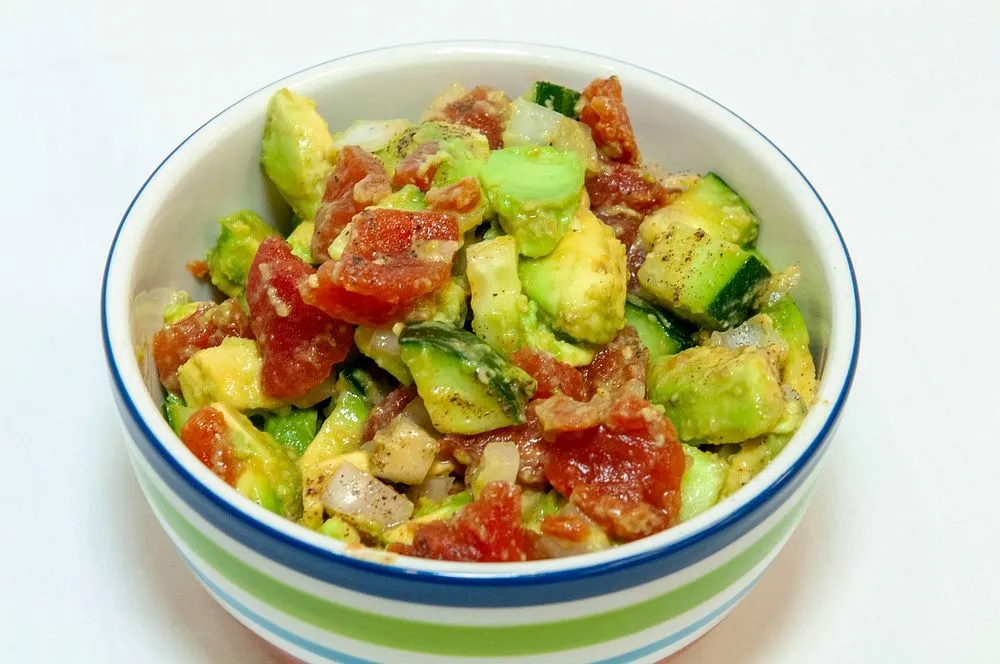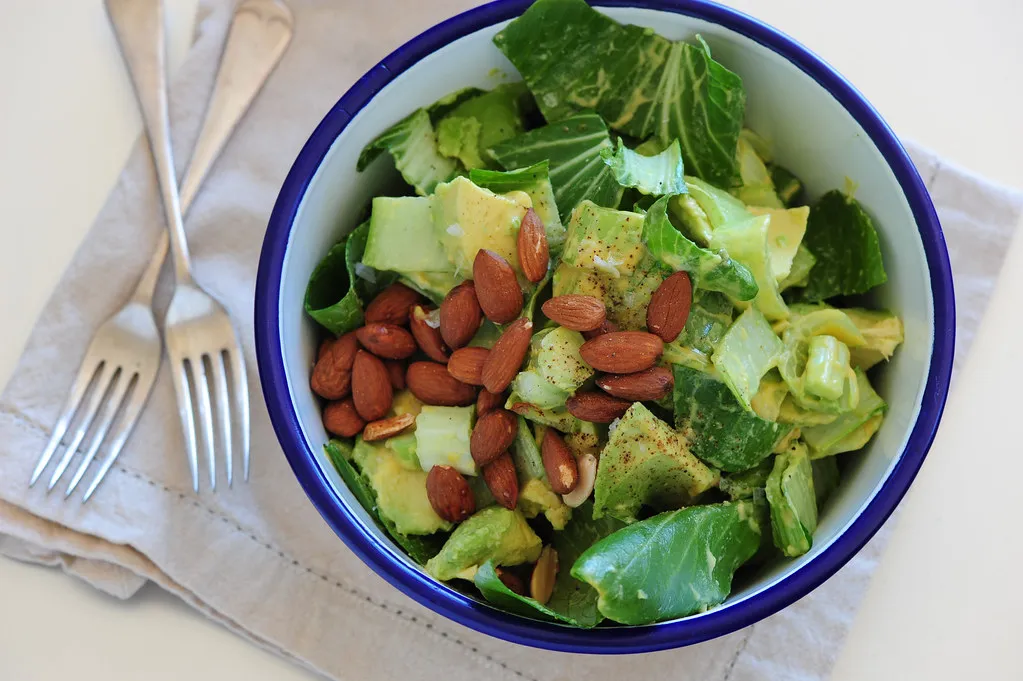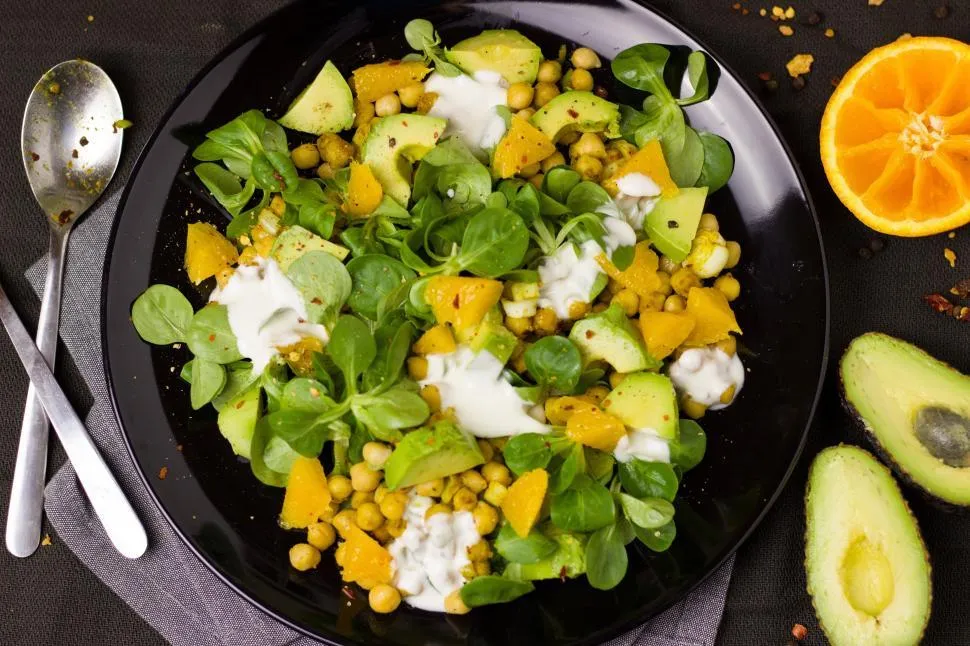The Best Fluffy Pancakes recipe you will fall in love with. Full of tips and tricks to help you make the best pancakes.
Avocado salads are the ultimate blend of health and flavor, offering a refreshing and nutritious meal that’s easy to prepare. With their creamy texture and rich taste, avocados are the star ingredient in this vibrant dish, making it both satisfying and heart-healthy. Packed with healthy fats, fiber, and essential nutrients, avocado salads provide a delicious way to nourish your body without compromising on taste.
Whether you’re looking for a light lunch, a quick side dish, or a filling snack, this avocado salad recipe is your go-to option. It’s a versatile dish that can be customized with fresh vegetables, zesty herbs, and a simple homemade dressing. In just a few steps, you’ll have a flavorful salad that’s perfect for any occasion. Let’s dive into this ultimate avocado salad recipe that’s as healthy as it is delicious!
Key Ingredients for the Ultimate Avocado Salad
When creating the perfect avocado salad, the quality and freshness of the ingredients are key. Each ingredient in this salad brings something special to the table, from flavor to texture to nutritional benefits. Let’s take a closer look at the key ingredients that make this avocado salad truly irresistible.

Avocados: The Star of the Salad
Avocados are the foundation of this salad, providing a creamy texture that perfectly complements the crisp vegetables. Rich in healthy monounsaturated fats, avocados are a powerhouse of nutrients, including fiber, potassium, and vitamins like Vitamin E and Vitamin K. These healthy fats not only promote heart health but also support skin health, making avocados a fantastic addition to any diet.
To ensure your salad is both flavorful and visually appealing, choose ripe avocados. A ripe avocado will give slightly when pressed gently, and its flesh should be a rich, vibrant green. For this recipe, you’ll want to cube the avocado to make it easy to mix with the other ingredients while retaining its creamy texture.
Fresh Vegetables to Add Crunch and Flavor
A great avocado salad isn’t complete without the crunch of fresh vegetables.
- Cucumbers are perfect for adding a refreshing, crisp texture. Their mild flavor balances the richness of the avocado and provides hydration thanks to their high water content. Slice them thinly or chop them into small cubes to suit your preferences.
- Tomatoes add a burst of color and juiciness. Their slight sweetness pairs beautifully with the creamy avocado, and they’re packed with antioxidants like lycopene, which supports heart health. Choose ripe, firm tomatoes for the best flavor, and consider using cherry or grape tomatoes for a bite-sized option.
- Red onions bring a sharp, slightly sweet bite that contrasts wonderfully with the creamy avocado. If you find raw onions too strong, you can soak them in cold water for a few minutes to mellow out their flavor. Red onions also add a pop of color to your salad, making it visually appealing.
Each of these vegetables contributes not only to the flavor but also to the texture and overall nutrition of the salad. Together, they create a refreshing combination that’s both satisfying and healthy.
Herbs and Spices for Extra Flavor
No salad is complete without a few fresh herbs and spices to elevate the flavor profile.
- Cilantro is the herb of choice in this recipe, bringing a citrusy, fresh note that enhances the richness of the avocado. If you’re not a fan of cilantro, parsley can be a great alternative with a more subtle, earthy flavor. You can chop the cilantro leaves finely or leave them in larger sprigs for a burst of flavor in each bite.
- Lime adds a zesty tang that brightens the entire dish. The acidity of lime helps balance the richness of the avocado and complements the freshness of the vegetables. For an extra layer of flavor, you can also use the zest from the lime.
- Chili flakes are optional but perfect for adding a bit of heat to the salad. A sprinkle of chili flakes gives the salad an exciting kick without overpowering the other flavors. If you prefer a milder taste, feel free to skip the chili flakes or substitute them with black pepper.
The combination of cilantro, lime, and chili flakes brings a burst of fresh, vibrant flavors to your avocado salad, making it irresistible to anyone who takes a bite.
Healthy Salad Dressings to Complement the Ingredients
While the ingredients in this salad are delicious on their own, the dressing is what brings everything together. A light, homemade dressing enhances the freshness of the vegetables and the creaminess of the avocado, adding that extra layer of flavor.
- Olive oil is the base for the dressing, providing a smooth texture and a mild, fruity flavor that complements the richness of the avocado. It’s also a great source of healthy fats that can help reduce inflammation and support heart health.
- Lemon or Lime juice brings acidity to the dressing, cutting through the richness of the avocado and vegetables. Freshly squeezed juice is always the best option for a bright, zesty kick.
- Garlic is another essential ingredient that gives the dressing depth and a savory note. A small minced clove of garlic can make all the difference, infusing the dressing with flavor without overpowering the salad.
Mixing these ingredients into a light, tangy dressing that coats each piece of the salad will elevate the entire dish. This simple dressing allows the fresh ingredients to shine while adding the perfect balance of creaminess and acidity.
How to Make the Perfect Avocado Salad
Making the perfect avocado salad is quick and easy! With a few simple steps, you can transform fresh ingredients into a delicious, healthy dish. Here’s a step-by-step guide to creating the ultimate avocado salad that will wow your taste buds and impress your guests.

Prepare Your Fresh Ingredients
The first step to making a great avocado salad is preparing your ingredients. Freshness is key for flavor, texture, and nutrition, so take your time with this step.
- Choosing Ripe Avocados:
- Gently squeeze the avocado to check for ripeness. It should yield slightly to pressure but not feel mushy.
- If it’s still hard, let it ripen at room temperature for a few days.
- Preparing the Avocados:
- Slice the avocado in half lengthwise.
- Remove the pit carefully.
- Scoop the flesh out with a spoon and cut it into cubes for the best texture in your salad.
- Prevent Browning:
- Squeeze fresh lime or lemon juice over the cut avocado to help prevent browning.
This also adds a bright, zesty flavor to the salad.
- Squeeze fresh lime or lemon juice over the cut avocado to help prevent browning.
- Recommended Knife:
- For easy and precise cutting, consider using a high-quality knife like the Ninja Knife, which features NeverDull technology for precise cuts and effortless slicing.
- Chopping the Vegetables:
- Cucumbers should be washed and peeled (if you prefer), then sliced or chopped into bite-sized pieces. This adds a refreshing crunch to balance the creaminess of the avocado.
- Tomatoes should be cut into small chunks or slices. If using cherry or grape tomatoes, just halve them. Their juicy, sweet flavor pairs perfectly with the creamy avocado and adds a burst of color to your salad.
- Red onions should be thinly sliced. For a milder taste, soak them in cold water for about 10 minutes before adding them to the salad to tame their sharpness.
- Prepare Fresh Herbs:
- Cilantro adds a fresh, citrusy flavor that elevates the salad. Chop the cilantro finely, but if you prefer a stronger flavor, you can leave it in larger pieces. You can also substitute it with parsley if you’re not a fan of cilantro’s distinct taste.
- You’ll also need to slice a fresh lime or lemon for juicing to add a tangy, refreshing element to the dish.
Assemble the Salad
Once all your ingredients are prepped, it’s time to assemble the salad. This is the fun part where you get to mix everything together!
- Combine the Ingredients:
- In a large salad bowl, add the cubed avocado, chopped cucumbers, tomatoes, and red onions.
- Sprinkle in the freshly chopped cilantro (or parsley) for an extra burst of flavor.
- Gently toss the ingredients together to avoid mashing the delicate avocado. The goal is to mix everything just enough to combine the textures and flavors, while keeping the avocado pieces intact.
- Prepare the Dressing:
- In a small bowl, whisk together olive oil, the juice of lime or lemon, and a minced clove of garlic. If you like a bit of heat, add a pinch of chili flakes or cayenne pepper. Season the dressing with salt and pepper to taste.
- For extra richness, you can add a teaspoon of honey or a splash of apple cider vinegar for a touch of sweetness or acidity, depending on your preference.
- Toss the Salad with Dressing:
- Pour the dressing over the salad and gently toss everything together. Make sure the avocado and vegetables are coated in the dressing for maximum flavor.
- Taste and adjust the seasoning if necessary. You can add more salt, pepper, or lime juice, depending on your preferences.
Serving Suggestions
Now that your salad is ready, it’s time to serve and enjoy!
- Presentation Tips:
- For an elegant touch, you can serve the avocado salad in individual bowls or on a large platter. Garnish with a few extra sprigs of cilantro or a slice of lime for added color.
- To add extra texture, sprinkle roasted sunflower seeds, pumpkin seeds, or toasted nuts on top for a delightful crunch. You can also crumble some feta cheese or goat cheese for a creamy contrast.
- Pairing Options:
- This avocado salad works well as a standalone dish, but it’s also a great accompaniment to grilled chicken, shrimp, or even fish tacos. It makes an excellent side dish for a summer barbecue or a light lunch option.
- For a more substantial meal, add a protein source like grilled chicken, quinoa, or beans to make it heartier and more filling.
- Storage Tips:
- If you have leftovers, store the avocado salad in an airtight container in the refrigerator. To prevent the avocado from browning, place a piece of plastic wrap directly over the surface of the salad, ensuring it’s in contact with the avocado. This helps reduce oxidation.
- The salad is best enjoyed within a few hours of making it to keep the avocado fresh and the vegetables crisp.
The Health Benefits of Avocado Salad
Avocado salads are not only a treat for the taste buds but also pack a wide range of health benefits. By combining fresh, nutrient-dense ingredients like avocados, vegetables, and healthy fats, this salad can be an essential part of a balanced diet. Let’s explore the many ways in which an avocado salad can improve your overall health.
Packed with Heart-Healthy Fats
One of the most significant health benefits of avocado salad is its high content of monounsaturated fats. Avocados are rich in these heart-healthy fats, which are known to help lower bad cholesterol (LDL) levels and raise good cholesterol (HDL). Regular consumption of monounsaturated fats has been linked to a reduced risk of heart disease and stroke.
These healthy fats also promote better circulation, support the function of the nervous system, and contribute to improved brain health. Additionally, they help the body absorb fat-soluble vitamins like vitamins A, D, E, and K, which are essential for various bodily functions.
Rich in Fiber for Digestive Health
Avocados are an excellent source of dietary fiber, an essential nutrient that supports healthy digestion. Fiber helps regulate bowel movements and reduces the risk of constipation, keeping your digestive system running smoothly.
The high fiber content in avocado salad also promotes a healthy gut microbiome, which can have positive effects on your overall well-being. A balanced microbiome contributes to better immunity, improved mood, and reduced inflammation.
In addition to avocados, the vegetables in the salad, such as cucumbers, tomatoes, and onions, provide additional fiber, helping to keep you feeling fuller for longer. This makes the salad a perfect choice for anyone looking to maintain a healthy weight or improve their digestion.
Packed with Nutrients for Overall Wellness
Avocado salad offers an array of vitamins and minerals that support various aspects of health. Here are some key nutrients found in the ingredients:
- Avocados are an excellent source of potassium, which plays a vital role in maintaining proper electrolyte balance, regulating blood pressure, and supporting healthy muscle and nerve function. A serving of avocado provides more potassium than a banana, making it a great choice for those looking to boost their intake of this important mineral.
- Tomatoes provide vitamin C, a powerful antioxidant that supports immune function, promotes skin health, and helps the body absorb iron from plant-based foods. Vitamin C also plays a role in collagen production, which is essential for healthy skin, joints, and blood vessels.
- Cucumbers are rich in water, making them great for hydration. Staying hydrated is essential for maintaining energy levels, supporting healthy skin, and aiding in digestion. Additionally, cucumbers contain vitamin K, which is crucial for blood clotting and bone health.
- Red onions are rich in flavonoids, particularly quercetin, a powerful antioxidant that helps reduce inflammation and supports heart health. Quercetin has also been shown to have anti-cancer and anti-diabetic properties.
When combined, these ingredients form a nutrient powerhouse that supports your immune system, bone health, skin health, and more.
Supports Weight Management
If you’re looking to maintain or lose weight, avocado salad is an excellent option. The healthy fats in avocados, along with the fiber from the vegetables, help you feel fuller for longer, reducing the temptation to snack between meals.
Fiber also helps regulate blood sugar levels by slowing down the digestion of carbohydrates, which helps prevent blood sugar spikes and crashes. This is particularly beneficial for individuals managing diabetes or those aiming to maintain stable energy levels throughout the day.
Additionally, avocados contain oleic acid, which has been shown to have anti-inflammatory properties and may assist with weight loss by increasing fat breakdown and reducing fat storage.
Boosts Skin Health
The healthy fats in avocados aren’t just great for your heart—they’re also wonderful for your skin. The monounsaturated fats in avocados help maintain skin hydration, reducing dryness and flakiness. The vitamin E content in avocados also acts as an antioxidant, protecting the skin from oxidative stress caused by environmental factors like pollution and UV radiation.
Additionally, the vitamin C found in tomatoes and the beta-carotene in cucumbers work together to promote collagen production, which is essential for maintaining skin elasticity and reducing the appearance of wrinkles and fine lines.
Regular consumption of avocado salad can help you maintain smooth, radiant skin while also supporting your overall health from the inside out.
Anti-Inflammatory and Antioxidant Properties
Avocado salad is packed with antioxidants and anti-inflammatory compounds that can help protect the body from oxidative stress and inflammation. Chronic inflammation is linked to numerous health conditions, including arthritis, heart disease, and even certain cancers.
- Avocados contain vitamin E and glutathione, both of which are powerful antioxidants that protect cells from damage and reduce inflammation in the body.
- Tomatoes are rich in lycopene, an antioxidant that has been shown to protect against oxidative stress, improve heart health, and reduce the risk of certain cancers.
- Red onions, as mentioned earlier, contain quercetin, a flavonoid with anti-inflammatory properties that can help reduce the effects of chronic inflammation.
Incorporating foods rich in antioxidants and anti-inflammatory compounds, like the ingredients in this avocado salad, can help protect your body from diseases while promoting overall health and vitality.
Variations and Tips for Customizing Your Avocado Salad
One of the best things about avocado salad is its versatility. You can easily customize it to suit different tastes, dietary needs, or the ingredients you have on hand. Whether you prefer a tangy twist, a protein boost, or more crunch, there’s an endless array of possibilities to make this salad your own. Below are some ideas to help you customize your avocado salad to fit your mood or dietary preferences.

Add a Protein Boost for a Filling Meal
If you’re looking to turn your avocado salad into a more substantial meal, consider adding a protein source to make it more filling and satisfying. Here are some protein-packed options:
- Grilled Chicken: Lightly seasoned grilled chicken breast is a great way to add lean protein to your avocado salad. Slice it into thin strips or cubes and toss it with the salad for a hearty and nutritious boost.
- Shrimp or Fish: For a refreshing, lighter take, add grilled shrimp or salmon to your salad. The rich, smoky flavors of the seafood complement the creamy avocado, while adding healthy omega-3 fatty acids to the mix.
- Chickpeas or Black Beans: If you prefer a plant-based protein, chickpeas or black beans are a great option. They add fiber, protein, and a subtle earthy flavor that pairs perfectly with the fresh vegetables and creamy avocado.
- Hard-Boiled Eggs: For a simple yet satisfying protein addition, top your salad with sliced hard-boiled eggs. They add richness and boost the overall nutritional profile of the dish.
- Tofu or Tempeh: For a vegetarian or vegan-friendly protein, add tofu or tempeh. Both options are excellent sources of plant-based protein and can be easily pan-fried or grilled to add texture and flavor to the salad.
Add Some Crunch with Toppings
If you love texture in your salads, there are plenty of ways to add crunch to your avocado salad. Here are some ideas to take your salad’s texture to the next level:
- Nuts and Seeds: Adding toasted sunflower seeds, pumpkin seeds, or almonds gives your salad a crunchy, nutty flavor and a dose of healthy fats. You could also sprinkle on walnuts or pecans for added richness.
- Tortilla Chips or Croutons: For an extra crunch and a bit of indulgence, crumble some tortilla chips or croutons on top of your salad. The salty crunch will complement the creamy avocado, and it’s a fun addition to the overall texture.
- Crispy Bacon or Prosciutto: If you’re not following a vegetarian or vegan diet, crispy bacon or prosciutto adds a salty, savory crunch that pairs wonderfully with the smooth texture of avocado. You can crumble the bacon over the salad for extra flavor or cut the prosciutto into thin strips and toss it in.
Change Up the Dressings for Different Flavors
The dressing can make or break an avocado salad. While a simple olive oil and lime dressing is always delicious, switching up the dressing can take your salad to new flavor heights. Here are a few options to try:
- Creamy Dressing: If you love creamy dressings, you can mix up a Greek yogurt-based dressing with fresh herbs like dill or cilantro. Combine the yogurt with lime or lemon juice, a little olive oil, and your favorite spices for a tangy, creamy alternative.
- Balsamic Vinaigrette: A tangy balsamic vinaigrette brings a slightly sweet and acidic flavor that balances the creaminess of the avocado. Add a drizzle over your salad, and feel free to add a dash of honey or Dijon mustard for a more complex flavor.
- Spicy Chipotle Dressing: For those who like a little heat, try a chipotle dressing made with mayonnaise, chipotle peppers, lime juice, and a touch of honey. This adds a smoky and spicy kick to your salad, elevating the flavor profile.
- Tahini Dressing: A rich, nutty tahini dressing is a great choice for vegan or Mediterranean-style avocado salads. Combine tahini with lemon juice, garlic, olive oil, and a bit of water to create a smooth, creamy dressing with earthy undertones.
- Cilantro-Lime Vinaigrette: This light, refreshing dressing is a perfect complement to avocado salad. Made with fresh cilantro, lime juice, olive oil, and a hint of garlic, it enhances the flavors of the salad without overpowering them.
Mix in Seasonal Fruits for a Sweet Twist
Fruits can add a refreshing sweetness to an avocado salad and make it perfect for summer or any time you’re craving a fruity twist. Here are some great fruit options to consider:
- Mango: The sweet, tropical flavor of mango pairs perfectly with the creamy texture of avocado. Dice the mango into small chunks and toss it in with the salad for a refreshing burst of sweetness.
- Strawberries: Strawberries bring a juicy, slightly tart element that contrasts nicely with the smooth avocado. Slice them thin and add them to your salad for a bright pop of color and flavor.
- Pineapple: Pineapple adds a sweet and tangy bite to the salad. The acidity from the pineapple can help balance the richness of the avocado and enhance the overall flavor profile.
- Apple or Pear: For a more subtle sweetness, try adding thin slices of apple or pear. These fruits have a crisp texture that works well in combination with the creamy avocado.
- Pomegranate Seeds: Pomegranate seeds add a burst of sweetness and crunch, making your avocado salad look as beautiful as it tastes. The jewel-like seeds bring vibrant color and antioxidants to your dish.
Consider Dietary Preferences and Restrictions
If you or your guests have specific dietary needs, it’s easy to customize your avocado salad to meet those needs:
- Gluten-Free: Avocado salad is naturally gluten-free, but make sure to check the labels of any dressings, croutons, or toppings to ensure they’re gluten-free. Opt for gluten-free croutons or skip them for a lighter, fresher salad.
- Vegan or Plant-Based: For a vegan version of the salad, avoid using cheese or non-vegan dressings like ranch or mayonnaise. Instead, opt for plant-based protein (like chickpeas or tofu) and a vegan dressing such as tahini or a citrus vinaigrette.
- Low-Carb or Keto-Friendly: Avocado salad is great for a low-carb or keto diet. Skip the croutons and add a protein source like grilled chicken or shrimp to make it more filling. Ensure your dressing is sugar-free and made with healthy fats like olive oil.
- Low-Sodium: If you’re watching your sodium intake, avoid high-sodium ingredients like pre-packaged dressings, bacon, or croutons. Instead, make your own dressing and opt for fresh herbs and low-sodium alternatives.





